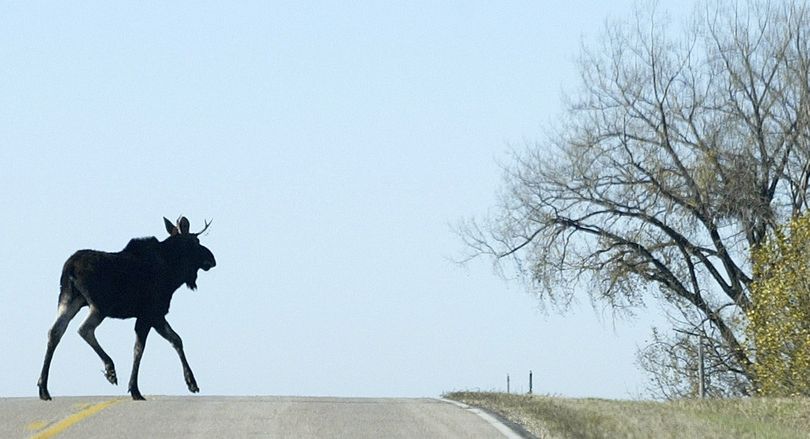Wildlife groups raises heat in climate change debate

CLIMATE CHANGE -- The National Wildlife Federation continues to point out the potential impacts of climate change on wildlife populations and the sports, hobbies and economies they support.
Rising temperatures, deeper droughts and more extreme weather events fueled by manmade climate change are making survival more challenging for America’s treasured big game wildlife from coast to coast, according to a new NWF report.
Nowhere to Run: Big Game Wildlife in a Warming World suggests how climate change is already putting many species of big game at risk, creating an uncertain future for big game and the outdoor economy that depends on them.
“The recovery of big game species is one of America’s wildlife conservation success stories, made possible in large part by sustained investment by generations of sportsmen,” said Dr. Doug Inkley, senior scientist at the National Wildlife Federation “But today, a changing climate threatens to rewrite that success story.”
Nowhere to Run is the latest in the National Wildlife Federation’s 2013 Wildlife in a Warming World series, which also includes:
- Wildlife in a Warming World: Confronting the Climate Crisis
- Shifting Skies: Migratory Birds in a Warming World
- Swimming Upstream: Freshwater Fish in a Warming World
Some of the impacts the NWF reports cite are still being studied, including the impact warming enviroments may be having on moose and their exposure to ticks. But with wildfire, floods and extreme weather events like heat waves, droughts and heavy rainfall becoming more frequent and more severe, the NWF says climate change should be on every sportsman's radar.
Unprecedented changes in habitat are having far-reaching consequences for big game and for sportsmen and women, affecting, for example, the timing of hunting seasons and the distribution and survival of animals, the NWF says.
“We’re already seeing changes where we hunt big game – reduced snowpack, dying forests, shifting migration patterns,” said Todd Tanner, founder and chairman of Conservation Hawks. “We have to let our elected officials know that we need solutions and we need them now. We’re running out of time.”
Read on for more details about Nowhere to Run, and the steps the NWF proposes to tackle the issue:
From the NWF:
Nowhere to Run takes a comprehensive look at available science on climate change’s impacts on big game, covering moose, mule deer, white-tailed deer, elk, pronghorn, bighorn sheep and black bears. The most significant effects include:
- Heat: Moose can become heat-stressed in warm weather, especially in summer if temperatures climb above 60 to70 degrees when moose coats are thinner. Heat stress leads to lower weights, declining pregnancy rates and increased vulnerability to predators and disease. Because of warmer fall and winter temperatures, black bears are already more active than usual during times when they normally conserve energy through hibernation, pushing fat stores to the limit.
- Drought: More droughts have reduced aspen forests in the west, a favorite elk habitat, and many elk are not migrating as much as they traditionally have. Increasing periods of drought, more invasive plants and wildfires will alter sagebrush and grassland ecosystems, favored pronghorn habitats.
- Parasites and disease: With less snowpack to kill ticks, moose in New Hampshire are literally being eaten alive, losing so much blood to ticks that they die of anemia. White-tailed deer are susceptible to hemorrhagic disease caused by viruses transmitted by biting midges.
“Cutting carbon pollution is the key in the long run, but in the short term we must also take action to help big game survive the climate changes we’re already seeing,” said Dr. Robert Brown, former dean of North Carolina State University’s College of Natural Resources and former president of The Wildlife Society. “We can do this by promoting climate-smart approaches to conservation and managing big game populations with a changing climate in mind. But with investments in wildlife research at a generational low, policymakers risk making these decisions in the dark.”
In 2011, there were more than 12 million adult big game hunters who spent more than $16 billion on hunting. More than 22 million people observed big game near their homes and 10 million traveled to view big game. Sportsmen have invested decades and millions of dollars in restoring big game habitats and populations, in excise taxes, hunting and fishing licenses and fees.
“Not only are our sporting traditions at risk, but jobs-producing tourism dollars could decline as there will be fewer wildlife to see in America’s wild places,” said Larry Schweiger, president and CEO of the National Wildlife Federation. “To protect America’s outdoor heritage, we must cut carbon pollution, speed our transition to clean energy and safeguard big game and their habitats from climate change.”
Nowhere to Run outlines the key steps needed to stem climate change and save big game:
- Address the underlying cause and cut carbon pollution 50 percent by 2030.
- Transition to cleaner, more secure sources of energy like offshore wind, solar power and next-generation biofuels and avoid polluting energy like coal and tar sands oil.
- Safeguard wildlife and their habitats by promoting climate-smart approaches to conservation.
- Factor a changing climate in big game plans and management.
